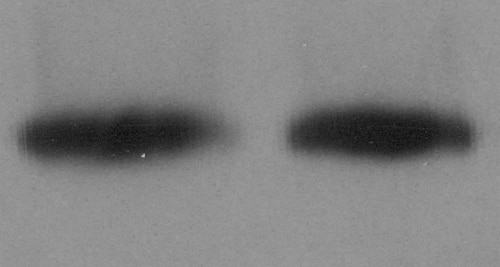Mouse SPARC-like 1/SPARCL1 Antibody Summary
Ile17-Phe650
Accession # P70663
Applications
Please Note: Optimal dilutions should be determined by each laboratory for each application. General Protocols are available in the Technical Information section on our website.
Reconstitution Calculator
Preparation and Storage
- 12 months from date of receipt, -20 to -70 °C as supplied.
- 1 month, 2 to 8 °C under sterile conditions after reconstitution.
- 6 months, -20 to -70 °C under sterile conditions after reconstitution.
Background: SPARC-like 1/SPARCL1
SPARCL1 (Secreted Protein, Acidic and Rich in Cysteines-like 1), also known as hevin, SC1 or MAST9, is a member of the SPARC family of extracellular glycoproteins (1, 2). SPARCL1 is an anti-adhesive protein that is widely expressed in tissues such as brain, heart, lung, muscle and kidney, but not liver (3, 4). Mouse SPARCL1 contains a 16 amino acid (aa) signal sequence and a 634 aa mature region that contains four domains: a 403 aa N-terminal acidic region, a 23 aa follistatin‑like domain, a 55 aa kazal-like segment and a 148 aa calcium‑binding domain that contains two EF hand motifs (3, 4). Mouse mature SPARCL1 shares 89%, 67%, 63%, 61%, 60%, and 58% aa identity with rat, human, equine, canine, porcine, and bovine SPARCL1, respectively. The follistatin-like, kazal-like and calcium‑binding domains of SPARCL1 show 61% aa identity with corresponding regions of SPARC. SPARCL1 is predicted at 75 kDa, but migrates at ~130 kDa, which has been explained either by disulfide-linked homodimerization or by glycosylation and high acidity (3‑5). Some truncated forms have been reported. In mouse, a 55 kDa C‑terminal fragment is the only form in kidney and represent a portion of SPARCL1 in other tissues (6). In humans, a 25 kDa form is increased in liver tumors that are encapsulated, while the full-length form is downregulated in many epithelial cell-derived tumors (7, 8). SPARCL1 inhibits adhesion and spreading on a variety of substrates (5, 9). It is thought to cause antiadhesive signaling that terminates neuronal migration, consistent with production by glial and neuronal cells during development or in response to trauma (10). In tonsillar high endothelial venules (HEV), SPARCL1 may induce endothelial cell dissociation, promoting extravasation (3). SPARCL1 binds collagen; in mice, deletion causes dermal collagen fibrils that are smaller in diameter and deficient in decorin (6, 11).
- Framson, P.E. and E.H. Sage (2004) J. Cell. Biochem. 92:679.
- Sullivan, M.M. and E.H. Sage (2004) Int. J. Biochem. Cell Biol. 36:991.
- Girard, J.P. and T.A. Springer (1995) Immunity 2:113.
- Bendik, I. et al. (1998) Cancer Res. 58:626.
- Brekken, R.A. et al. (2004) J. Histochem. Cytochem. 52:735.
- Hambrock, H.O. et al. (2003) J. Biol. Chem. 278:11351.
- Lau, C.P. et al. (2006) J. Pathol. 210:469.
- Isler, S.G. et al. (2001) Int. J. Oncol. 18:521.
- Girard, J.P. and T.A. Springer (1996) J. Biol. Chem. 271:4511.
- Gongidi, V. et al. (2004) Neuron 41:57.
- Sullivan, M.M. et al. (2006) J. Biol. Chem. 281:27621.
Product Datasheets
Citation for Mouse SPARC-like 1/SPARCL1 Antibody
R&D Systems personnel manually curate a database that contains references using R&D Systems products. The data collected includes not only links to publications in PubMed, but also provides information about sample types, species, and experimental conditions.
1 Citation: Showing 1 - 1
-
Blockade of Astrocytic Calcineurin/NFAT Signaling Helps to Normalize Hippocampal Synaptic Function and Plasticity in a Rat Model of Traumatic Brain Injury
Authors: Jennifer L. Furman, Pradoldej Sompol, Susan D. Kraner, Melanie M. Pleiss, Esther J. Putman, Jacob Dunkerson et al.
The Journal of Neuroscience
FAQs
No product specific FAQs exist for this product, however you may
View all Antibody FAQsReviews for Mouse SPARC-like 1/SPARCL1 Antibody
Average Rating: 5 (Based on 1 Review)
Have you used Mouse SPARC-like 1/SPARCL1 Antibody?
Submit a review and receive an Amazon gift card.
$25/€18/£15/$25CAN/¥75 Yuan/¥2500 Yen for a review with an image
$10/€7/£6/$10 CAD/¥70 Yuan/¥1110 Yen for a review without an image
Filter by:


